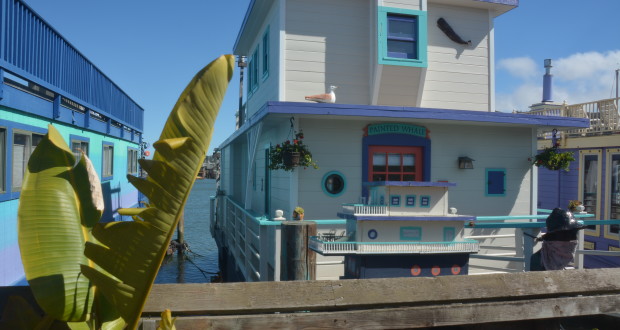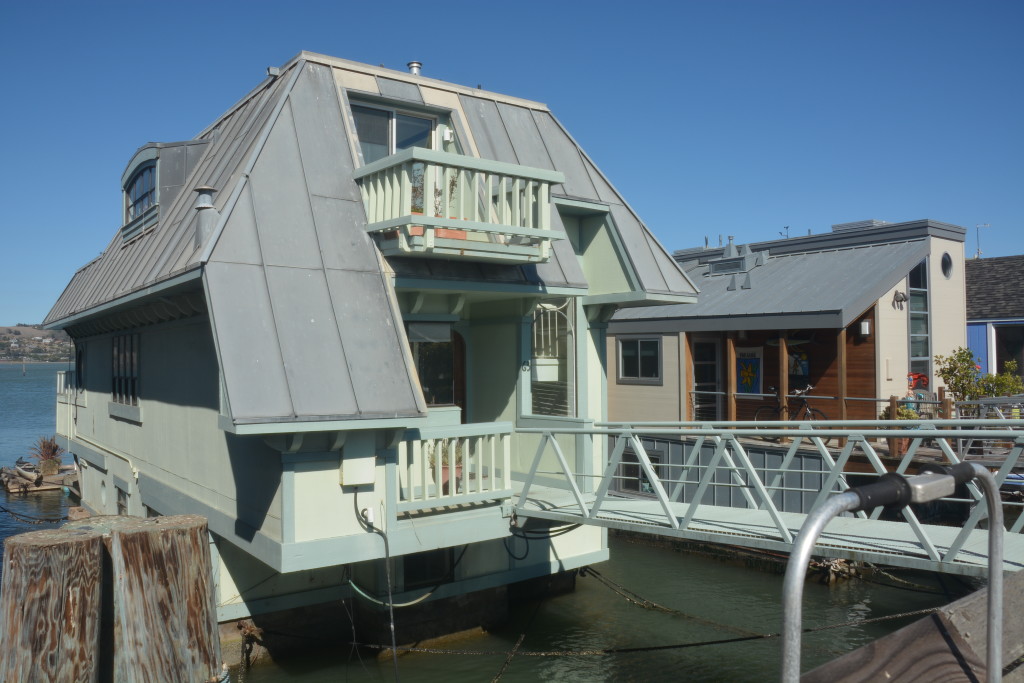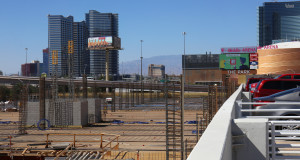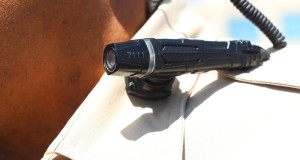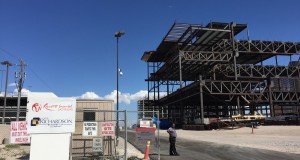In many ways, the neighborhood in Kappas Harbor of Sausalito, just across the Golden Gate Bridge from San Francisco, is your typical American neighborhood.
Neighbors host block parties and movie nights, go trick-or-treating every Halloween and take great pride in maintaining the greenery outside their homes.
But there’s also a key difference: the homes in the neighborhood are houseboats. Block parties take place along docks instead of sidewalks. Residents paddle out in boats to watch movies being projected outdoors on a large screen and to go trick-or-treating. And because there are no lawns, they fill the space around their slips with potted plants galore.
There are 438 families who live in the Floating Homes Association, according to Katherine Boschetto, president of the group and a 12-year resident of the docks along Richardson Bay.
“You will see a different flavor in every single berth,” she said during a recent community tour. “We have an array of ages, ethnic backgrounds and incomes.”.
Walking up and down the docks provides a good sense of how unique each home is. Most of the boats have been painted with bright colors or patterns: pink, orange, purple, blue, green. Eighty percent of the families have named their homes, Boschetto said. Signs on the houses boast names like “Alien Lifeform Research,” “The Grey Goose” and “Casa De Amor.”
The boats are referred to as floating homes because they cannot technically sail: they have no motors or method of steering. Instead, they are permanently tied down to ensure they don’t drift away.
The homes are equipped with nearly all of the amenities one would find in a house on land: WiFi, cable TV, garbage disposal pumps and, of course, water, gas and electricity. The smallest homes, measuring 400 square feet, sell for about $250,000. Larger homes, measuring 2,400 square feet, cost around $1.5 million.
The layout of the floating homes makes for a close sense of community, Boschetto said.
“You really get to know each other as you walk up and down the dock. You don’t just get in your car in your garage and drive away,” she said. “When I had surgery, for two weeks afterwards people would bring me dinner every night.”
That close sense of community has also translated into safety measures. The residents are amid a two-year process of building an emergency preparedness plan, aimed at dealing with storms, earthquakes and fires. That includes creating a list of people to check on – such as the elderly and families with young children – during natural disasters.
“We also give people signs that say “okay” on one side and “help” on the other. So they can flip the sign depending on whether they need help,” Boschetto said.
Although the boats can rock during storms, Boschetto said those times are actually her favorite part about living in a floating home.
“I love it. I have a fireplace and my house is rocking and I’m reading a magazine or something,” she said. “I find the water invigorating and calming at the same time.”
 VOICES Publishing from the AAJA National Convention
VOICES Publishing from the AAJA National Convention

